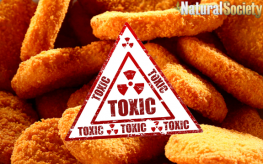Elizabeth Renter
Natural Society
October 11, 2013
 Jennifer Sass is a senior scientist with the Natural Resources Defense Council (NRDC), overseeing the chemicals and pesticides in regulatory programs of the Environmental Protection Agency (EPA). In other words, she knows a thing or two about industrial chemicals. Recently, Sass blasted the U.S. food system saying problems with the regulation of industrial chemicals by the Food and Drug Administration are worse than the problems she sees at the EPA—and that’s saying something. She also references a new report revealing how in danger our food is from a toxic-substances perspective.
Jennifer Sass is a senior scientist with the Natural Resources Defense Council (NRDC), overseeing the chemicals and pesticides in regulatory programs of the Environmental Protection Agency (EPA). In other words, she knows a thing or two about industrial chemicals. Recently, Sass blasted the U.S. food system saying problems with the regulation of industrial chemicals by the Food and Drug Administration are worse than the problems she sees at the EPA—and that’s saying something. She also references a new report revealing how in danger our food is from a toxic-substances perspective.
Sass says a recent report that sheds light on the FDA’s oversight of food additives should have everyone concerned. About 1,000 food additives are in the U.S. food supply without FDA knowledge or approval. For those that the FDA knows about (10,000 different additives), fewer than 38% have a “published feeding study” or a study indicating its safety within the food supply. For direct food additives, she says, the number of those studied is even smaller—at only 21.6%.
“It appears the FDA and the food industry were often making safety decisions by comparing one chemical to another rather than doing an actual toxicology study. In making such decisions, they were building a house of cards based on assumptions and unsupported extrapolations instead of direct scientific evidence.”
There are several reasons that such a jumbled mess of industrial chemicals and food additives have made it into our food supplies. One of those—that many chemicals were grandfathered into the system before the 1950s. These have been around for decades and there was never any approved studies on their safety. As for those newer additives, the food industry itself decides what’s safe and what isn’t, and can voluntarily let the FDA know if any substance is Generally Recognized as Safe (GRAS), not proving it to be so.
